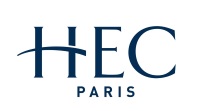No 1387: Supplier Collaboration in Collaborative Product Development with Internal Competition
Timofey Shalpegin, Svenja C. Sommer and Christian van Delft
Additional contact information
Timofey Shalpegin: University of Auckland Business School
Svenja C. Sommer: HEC Paris
Christian van Delft: HEC Paris
Abstract: This paper examines a development process in which a firm explores alternative approaches for the development of a single product. To do this, the firm employs competing internal teams, but it also needs to involve key suppliers who are responsible for the development of a key component (or subsystem) via a collaboration with one or several internal teams. We explore how internal competition affects the suppliers' collaborative efforts and the firm's profits, and also how the firm should allocate the internal teams to potential suppliers. Our analysis suggests that this setting is significantly different from standard tournament settings, implying that existing research results should not be simply extrapolated to supply chain settings. For example, unlike in traditional tournaments, we find that increasing supplier competition by increasing the number of teams per supplier can actually increase supplier efforts. We develop a tournament model with two suppliers who differ both in their expertise for the specific type of development project and in their development costs (i.e., their cost-effectiveness). We also identify a critical influential factor: the cost savings resulting from the similarity between different development efforts by the same supplier (with different internally competing teams). If the cost savings are not very high, i.e., if the different development efforts are not very similar, the firm should optimally allocate more teams to the supplier with less relevant expertise or lower cost-effectiveness. Similarly, involving a third supplier is beneficial only if the cost savings are low. While companies make significant efforts to identify the supplier with the best expertise, our results show that allocating more teams to the stronger supplier generally undermines the suppliers' incentives to exert high levels of effort. Hence, allocating the most teams to that supplier might not always improve firm profits.
Keywords: new product development; internal competition; collaborative development; supplier incentives; internal teams
JEL-codes: M10
39 pages, September 30, 2020
Full text files
papers.cfm?abstract_id=3671975 HTML file Full text
Questions (including download problems) about the papers in this series should be directed to Antoine Haldemann ()
Report other problems with accessing this service to Sune Karlsson ().
RePEc:ebg:heccah:1387This page generated on 2025-06-10 11:14:56.

